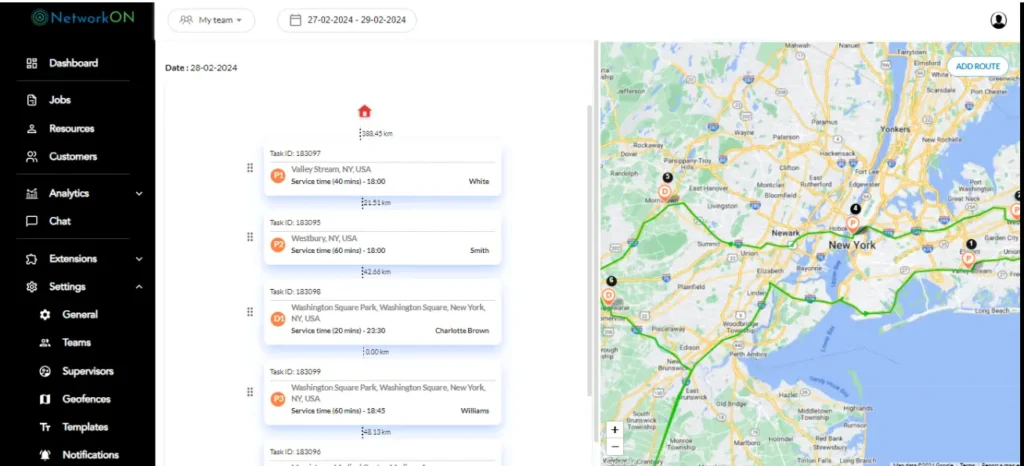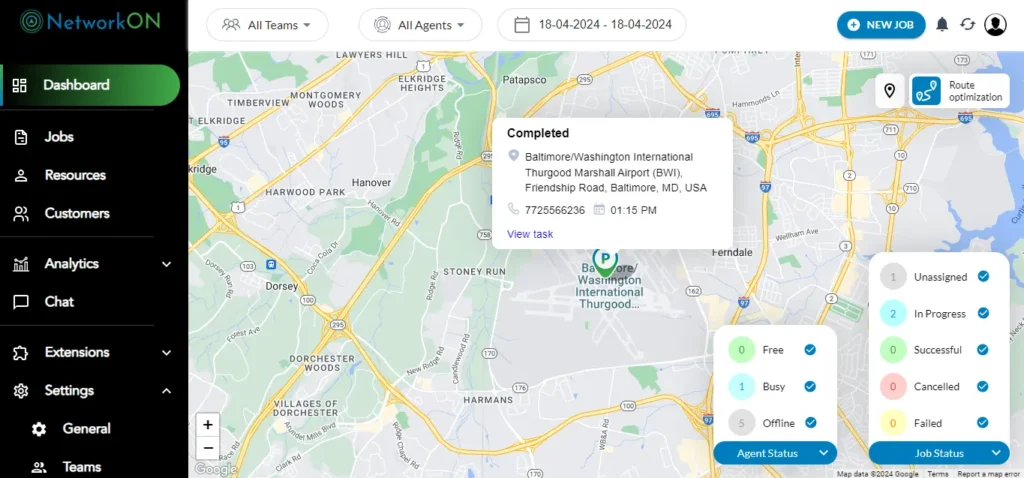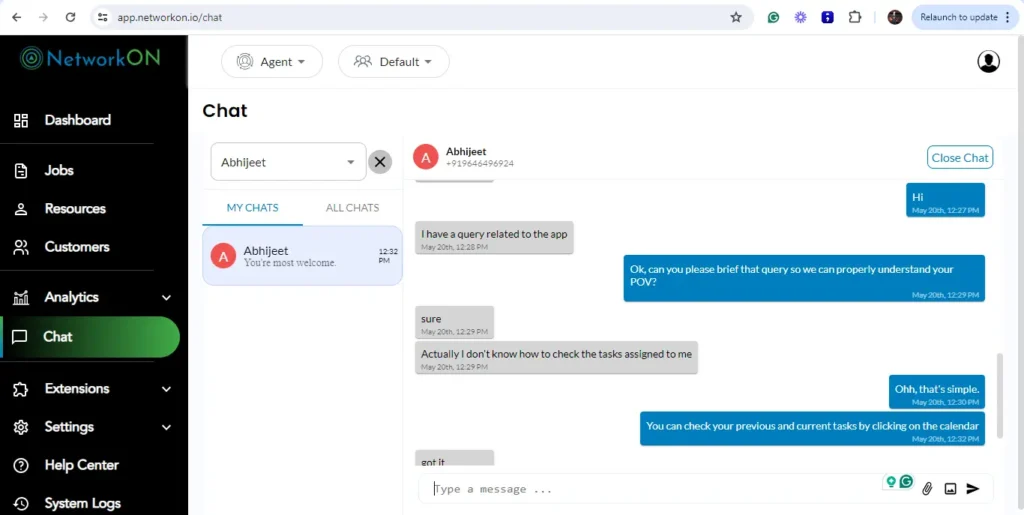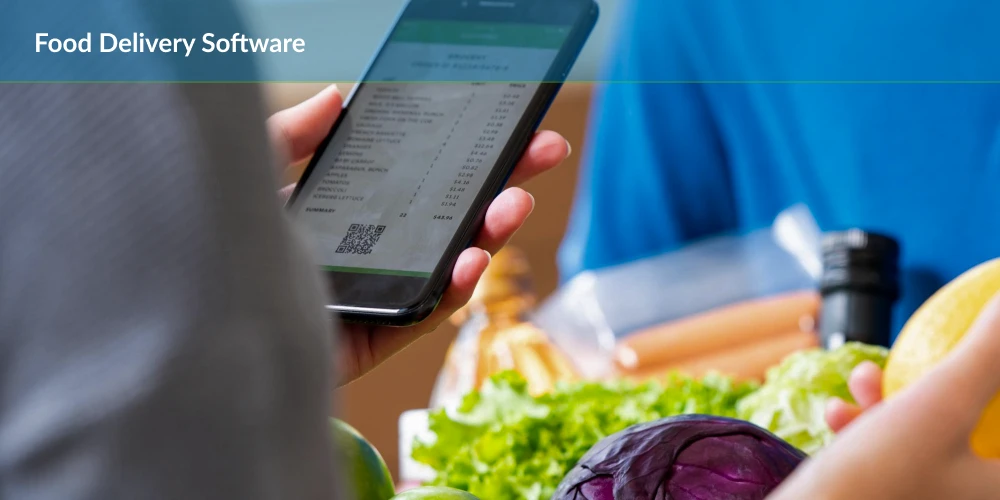Table of Contents
In an era where digital innovation charts the course of industry after industry, the food delivery sector has risen like a phoenix, reinventing the dining experience. Food delivery software has become the backbone of modern restaurant operations, seamlessly integrating into businesses eager to offer the convenience customers crave.

From small-town eateries to international chains, these sophisticated platforms cater to a new digital appetite, delivering meals and smiles equally efficiently. As consumer expectations evolve alongside rapid technology trends, the importance of adopting cutting-edge food delivery software cannot be overstated.
Join us as we explore the transformative impact of these digital solutions and how they’re shaping the future of food service.
Optimize Your Restaurant’s Reach with Online Ordering Systems
Embracing food delivery software with robust online ordering systems can transform how restaurants interact with customers. This technology streamlines the entire ordering process, from the kitchen to the customer’s doorstep, ensuring a seamless operation that meets modern dining expectations.
Streamlining Food Orders Through Your Website
Implementing an online ordering system on your restaurant’s website is critical to increasing efficiency. By allowing customers to place orders directly through your site, you streamline your service and collect valuable data on customer preferences and ordering habits. An effective system simplifies the ordering process, making it quick and hassle-free.
Integration with Mobile Applications
With the rise in smartphone usage, integrating food delivery software with mobile applications is essential for reaching a broader audience. A dedicated app enhances the customer experience with features like saved preferences, order tracking, and push notifications for the latest deals and updates.
Enhancing Customer Convenience with User-friendly Interfaces
A user-friendly interface is the cornerstone of any successful online ordering system. Customers expect a hassle-free experience when ordering food, which means intuitive navigation, clear menus, and a quick checkout process are must-have features in your food delivery software. By prioritizing user experience, you will likely see higher customer satisfaction and repeat business.
- Ensure your online ordering system is simple and intuitive.
- Integrate with mobile apps to access a wider customer base.
- Focus on customer convenience with a streamlined checkout process.
Mobile App Development for Food Delivery
The rise of mobile technology has transformed the food delivery industry, and at the heart of this evolution is mobile app development. An intuitive and user-friendly app isn’t just a value addition; it’s essential for any food delivery business aiming to thrive in a competitive market.
Features that Set Your Service Apart
Every food delivery app should offer a unique proposition to its users to stand out from the crowd. Features such as real-time order tracking, multiple payment options, and push notifications for promotions and order updates are no longer optional—they are expected by discerning customers. Integrating advanced features such as AI-based recommendations, interactive menus, and loyalty programs can elevate the user experience and set your service apart.
Prioritizing Ease of Use in App Design
When building a food delivery app, ease of use is paramount. The app should feature a clean and clear layout, making the ordering process as straightforward as possible. Simplifying search functions, ensuring rapid loading times, and providing one-click reordering options can significantly enhance the user experience. An app that is easy to navigate retains customers and encourages repeat business.
Building Brand Loyalty Through a Personalized App Experience
To foster brand loyalty, food delivery apps must offer a personalized experience to each user. Using sophisticated algorithms and data analysis, an app can suggest dishes, remind users of their favorite orders, or anticipate their needs based on previous order history. It not only speeds up the ordering process for the consumer but also demonstrates a level of care and attention to their preferences, building a strong, loyal customer base.
- User Profiles: Allow customers to create personalized accounts to track their orders, save favorite dishes, and receive tailored recommendations.
- Loyalty Programs: Integrate a loyalty program that rewards customers for frequent orders, incentivizing them to choose your app over competitors.
- Customization Options: Allowing users to customize their orders from within the app can improve satisfaction and increase the likelihood of repeat orders.
Revolutionize Your Delivery Service with Advanced GPS Tracking
Optimizing the delivery process is essential for any food delivery software aiming to succeed in today’s competitive market. By leveraging state-of-the-art GPS tracking technology, businesses can provide real-time updates to their customers and significantly improve efficiency through intelligent route mapping.
GPS tracking technology is a cornerstone in increasing the transparency and reliability of your food delivery service, fostering a deeper sense of trust among your clientele.
Real-Time Updates for Customers
Stay ahead of the game with GPS tracking that gives your customers minute-by-minute updates on their orders. From the moment a delivery is dispatched to the second it arrives at the doorstep, your clients can now enjoy an unprecedented level of insight into the journey of their meals. This feature enhances customer satisfaction and reduces the volume of customer service inquiries related to order status.
Efficient Route Mapping for Faster Deliveries
Food delivery software incorporating GPS tracking can analyze and dictate the most efficient pathways for delivery personnel. It ensures quicker delivery times but also aids in reducing fuel consumption and minimizing wear and tear on delivery vehicles. Efficient route mapping is key to maximizing productivity and providing swift customer service, putting you ahead of competitors.
Building Trust with Transparency
Transparency is a significant factor in successful service delivery. By allowing your customers to track their orders in real-time, your business demonstrates a commitment to honest communication, increasing trust in your delivery service. This level of openness is invaluable for securing repeat business and garnering positive reviews, as customers appreciate the empowerment and engagement of live tracking information.
- Provide customers with live updates on the status of their delivery.
- Utilize advanced route optimization to ensure the fastest delivery time.
- Transparency leads to increased customer trust and loyalty.
Contactless Delivery: Adapting to New Norms
In the wake of the COVID-19 pandemic, the food delivery industry has experienced a rapid transformation. With public health concerns driving changes in consumer behavior, food delivery software has had to evolve to meet new expectations.
Meeting Customer Expectations Post-COVID-19
The demand for contactless options has surged as customers seek safer, more convenient ways to receive their meals without direct interaction. This shift has made contactless delivery a nice-to-have feature and an essential aspect of food delivery services.
Implementing and Marketing a Contactless Delivery Option
To stay relevant, businesses must integrate contactless delivery methods into their operations. This integration goes beyond operational changes; it’s also crucial to effectively communicate the availability and benefits of contactless delivery to customers. Clear messaging through your food delivery software can reassure customers and enhance their sense of safety when ordering.
Staying Ahead with Innovative Delivery Solutions
To lead in the market, forward-thinking companies leverage advanced food delivery software to offer even more innovative solutions. Whether through app-based ordering systems, real-time tracking, or secure payment gateways, the goal is to provide a seamless and touch-free experience from start to finish.
- Enhancing customer trust by prioritizing health and safety
- Utilizing technology to facilitate zero-contact exchanges
- Adapting service models for efficiency in the new delivery landscape
By embracing these new norms, food delivery services can navigate the challenges of the pandemic while setting new industry standards. Contactless delivery isn’t just a response to an immediate need—it’s a step towards the future of food delivery.
Seamless POS System Integration in Food Delivery Software
Integrating food Delivery Software with point-of-sale (POS) systems is a game-changer for modern food delivery businesses. This powerful feature streamlines transactions and elevates restaurant and client experience. Businesses can significantly reduce errors, boost efficiency, and enhance customer satisfaction by automating the order flow from the website to the kitchen.
Automating Order Flow from Website to Kitchen
Integrating food delivery software with POS systems means when a customer places an online order, it’s automatically sent to the kitchen without manual input. This direct communication reduces wait times and prevents the mistake of manually transferring order information.
Synchronizing Online and In-House Transactions
A unified system ensures that both online and walk-in transactions are synchronized. It preserves the integrity of sales data and inventory counts, making it much simpler for restaurants to manage their operations and plan for demand without the risk of oversight.
Simplifying the Management of Sales Data
With POS integration, food delivery platforms can offer businesses powerful insights by simplifying sales data management. Managers can easily track performance across multiple revenue streams, leading to informed decision-making and strategic planning tailored for growth and efficiency.
- Automating order flow: Ensures rapid and accurate order processing from online orders to fulfillment.
- Synchronizing transactions: Maintains a consistent and real-time record of all sales transactions, regardless of origin.
- Simplifying data management: Offers robust reporting tools to help restaurants analyze sales trends and make data-driven decisions.
Delivery Route Optimization: Elevating Efficiency in Food Delivery
In the competitive sphere of food delivery, the difference between satisfactory and exceptional service often hinges on the efficiency of delivery operations. One pivotal aspect is Delivery Route Optimization, a technological marvel designed to streamline the journey from the restaurant to the customer’s doorstep.

Let’s dissect how this formidable feature is revolutionizing food delivery.
Minimizing Delivery Times with Smart Routing
The essence of food delivery is promptness. With smart routing, food delivery software leverages algorithms to calculate the shortest and quickest paths. By considering real-time traffic conditions, closures, and even the number of left turns required, deliveries become swifter and customers happier.
Reducing Fuel Costs and Increasing Delivery Efficiency
Efficiency is measured not only in time saved but also in reducing operational costs. Optimizing delivery routes leads to lower fuel consumption, both economically beneficial and environmentally sound. This optimization ensures each journey maximizes deliveries while minimizing unnecessary mileage, leading to an eco-friendly, cost-effective operation.
Enhancing Delivery Drivers’ Experiences
An often overlooked benefit of route optimization is its impact on the drivers. Smart routing alleviates the stress associated with navigation and tight schedules. By empowering drivers with the most efficient routes, food delivery software ensures a less hectic and more manageable workflow, improving job satisfaction and reducing turnover rates.
Enhance Your Service with Advanced Customer Relationship Management (CRM)
At the heart of any successful food delivery service lies a robust Customer Relationship Management (CRM) system. Sophisticated food delivery software isn’t just about getting orders from point A to B; it’s about creating meaningful connections with customers and evolving alongside their needs. A well-integrated CRM component elevates the customer experience by harnessing data to personalize every interaction.
Building a Customer Database to Personalize the Service
Personalized service begins with understanding your customers. A CRM system helps construct a detailed customer database, providing insights into individual preferences and order history. This information enables tailored marketing strategies, targeted promotions, and the kind of individual attention that leads to increased customer loyalty.

Implementing Loyalty Programs Within the Software
Loyalty programs are a powerhouse in driving repeat business. They reward customers for their loyalty, encourage continued engagement, and when managed through your CRM, they become seamlessly integrated into the ordering process. Food delivery software that supports loyalty programs paves the way for innovative reward structures, keeping your service top-of-mind for consumers.
Managing Reviews and Feedback to Improve Customer Satisfaction
Feedback is gold dust, and a comprehensive CRM tool is your sieve. Harnessing customer reviews and feedback within your food delivery software offers a direct line to what’s working and needs enhancement. An authoritative CRM brings these insights to the forefront, guiding improvements that boost customer satisfaction and cement your reputation as a customer-centric service.
- Compile and analyze feedback for service refinement.
- Address customer concerns swiftly and effectively.
- Track the impact of adjustments on customer satisfaction.
Integrating a CRM system into your food delivery software is a strategic move that can lead to unrivaled success. It’s about creating a cycle of positive interactions that not only meets but anticipates customer needs, fostering a loyal base of happy customers that powers your growth.
Seamless and Secure Payment Gateway Integration for Food Delivery Platforms
Food delivery software has revolutionized the way we order and enjoy our meals. A crucial component that keeps this system running smoothly is the integration of robust payment gateways. The convenience and security offered by these gateways not only foster customer trust but also support business growth through seamless transactions.
Offering a Variety of Secure Payment Options
Modern consumers value flexibility and choice, especially regarding payment methods. A food delivery platform must accommodate a range of payment options, from traditional credit/debit cards to emerging digital wallets and online payment systems. This inclusivity ensures that every customer can conveniently transact for them, increasing the likelihood of repeat business.
Easing the Checkout Process for Faster Conversions
Streamlining the checkout process is pivotal to improving conversion rates. A sophisticated payment gateway is designed to facilitate a quick, effortless payment experience, minimizing the number of steps a user must take to complete their order. This ease of use is integral for keeping the purchase momentum going and reducing abandoned carts.
Ensuring Data Security and Compliance with Industry Standards
Security is non-negotiable when handling customer payment information. Food delivery software must integrate payment gateways that adhere to the highest data security levels and comply with industry standards like PCI DSS. Strong encryption protocols and fraud detection mechanisms are essential features that protect the business and its customers, fortifying the trust that is the foundation of the customer-business relationship.
- Secure Sockets Layer (SSL) certificate implementation to safeguard data transfer
- Two-factor authentication (2FA) as an additional security layer
- Regular updates and security patches to protect against new vulnerabilities
Integrating advanced payment solutions with your food delivery software is a powerful way to provide security, speed, and satisfaction to your customers while streamlining your operations for better efficiency and profitability.
Insights into the Future of Eating: Food Delivery Trends and Statistics
With the industry evolving rapidly, understanding these patterns gives businesses an authoritative edge in catering to customer preferences and enhancing their service offerings.
Leveraging Industry Data to Inform Strategic Decisions
To stay ahead in the competitive food delivery landscape, businesses must tap into the power of industry data. By analyzing trends such as the rise of plant-based menu items or the increasing demand for meal kits, companies can tailor their strategies to meet the moment and anticipate future changes.
Understanding Customer Behavior and Preferences
Customer expectations are constantly shifting, and in today’s market, personalization is key. Data that tracks customer ordering patterns, preferred cuisine types, and peak ordering times can help fine-tune the user experience, leading to higher satisfaction and retention rates.
Using Insights to Improve Service Offerings
Data insights aren’t just academic; they’re actionable. Forward-thinking food delivery services use hard statistics to refine everything from menu selection to delivery efficiency, setting new benchmarks for industry best practices.
- Popular Cuisines: Operators curate menus based on trending cuisines to capture market interest.
- Technology Adoption: Continual investment in tech ensures businesses remain on the cutting edge of delivery logistics.
- Customer Engagement: Analyzing feedback and engagement patterns leads to more personalized marketing and communication strategies.
As the food delivery industry grows, these trends and statistics serve as guiding lights for businesses aiming to deliver exceptional service and stay ahead in a competitive marketplace.
Optimize Your Food Service with Advanced Restaurant Inventory Management
Optimal inventory management is the cornerstone of any successful food delivery operation. With the advancements in food delivery software, restaurants can now effortlessly synchronize order volume with inventory levels, ensuring a streamlined process that maximizes efficiency and minimizes waste. Being authoritative in the food delivery market means leveraging technology to keep you one step ahead in managing your resources effectively.
Connecting Order Volume with Inventory Levels
Integrating food delivery software into your inventory system provides real-time tracking of stock levels correlated with order volumes. This connection is essential for maintaining an efficient kitchen that can adapt quickly to changes in customer demand while avoiding overstocking or stockouts.
Reducing Waste Through Predictive Ordering
Predictive ordering is a game-changing feature of modern food delivery software that utilizes historical data and ordering patterns to forecast future needs. By predicting more accurately what and how much stock is required, restaurants can significantly reduce waste and optimize food usage. It not only cuts costs but also supports a more sustainable operating model.
Streamlining Supplier Management and Procurement
A robust food delivery software system encapsulates seamless supplier management and procurement processes, providing a platform for restaurants to manage their suppliers in a unified, efficient manner. This software component centralizes orders, tracks deliveries, and manages vendor relationships, ensuring the procurement process is as smooth as the delicious dishes that reach the customers’ tables.
- Integration with vendors for automated order placement
- Tracking of purchase orders and delivery receipts
- Analysis tools for evaluating supplier performance and costs
Data Security and Privacy in Food Delivery Apps
With the proliferation of food delivery software, ensuring data security and privacy has become a critical element that cannot be overlooked. As customers entrust their personal information to these apps, it is paramount for businesses to deploy robust security measures.
Protecting Customer Information from Cyber Threats
Food delivery apps must implement comprehensive cybersecurity strategies in the face of increasing cyber threats. It involves encrypting sensitive data like credit card numbers and personal information to thwart hackers and prevent data breaches. Regular security audits and updates are also necessary to keep the software ahead of potential threats.
Adhering to Data Privacy Laws and Guidelines
Compliance with data privacy laws and regulations, such as GDPR in Europe, CCPA in California, and other regional guidelines, is mandatory for operating legally and ethically. Food delivery apps must be compliant and transparent with users about how their data is collected, used, and stored.
Building Customer Trust with Robust Security Measures
Food delivery apps must exceed the minimum legal requirements for data security to maintain and build customer trust. Investing in advanced security technologies and practices, such as multi-factor authentication and secure coding practices, is essential. Open communication about security measures also reassures customers that their data is safe.
- Employing end-to-end encryption for all transactions
- Regularly updating privacy policies to reflect the evolving data landscape
- Offering customers control over their data and privacy settings
In conclusion, data security and privacy are about compliance and establishing a lasting relationship based on customer trust. As food delivery services continue to grow, those who prioritize and invest in superior data security practices will stand out and potentially lead the market.
User Experience (UX) Design for Food Ordering Apps
In the competitive landscape of food delivery software, establishing an outstanding User Experience (UX) Design is not just an option but a necessity. The effectiveness of a food ordering app is measured not only by its features but also by how easily and quickly users can navigate through it and place their orders. A seamless UX can significantly enhance customer satisfaction and drive up order volumes.
Designing for Ease of Navigation and Order Placement
The success of a food delivery app hinges on intuitive navigation and effortless ordering processes. Minimizing the number of steps from app launch to order confirmation ensures a frictionless experience that customers appreciate and return for. Food delivery software must be precise, direct, and helpful, guiding users through the selection and checkout process easily and efficiently.
Ensuring Compatibility Across Various Devices and Platforms
With the many devices and operating systems today, food delivery software must function flawlessly across all platforms. Whether your customers are using smartphones, tablets, desktops, iOS, Android, or web browsers, the responsive design of your app must ensure a consistent and smooth experience on every screen size and resolution.
Incorporating User Feedback to Refine the App Experience
Lastly, continuous improvement of the UX is key. Leveraging user feedback to refine and tailor the app’s design and functionality helps create a user-centric platform that resonates with your client base. Listening and adapting to user input ensures that the food delivery software remains relevant and user-friendly, encouraging continued engagement and fostering customer loyalty.
Artificial Intelligence in Food Delivery: A Game-Changer in the Industry
The emergence of Artificial Intelligence (AI) has redefined the landscape of numerous industries, with the food delivery sector standing at the forefront of this technological revolution. AI’s ability to analyze large volumes of data and predict user behavior transforms food delivery services into highly efficient, customer-centric platforms.
Personalizing Customer Experiences Through AI
AI-enabled food delivery software harnesses the power of machine learning algorithms to tailor user experiences. By examining previous orders, customer preferences, and even dietary restrictions, AI provides personalized menu suggestions and enhances the customer journey, making it more intuitive and satisfying.
Implementing Chatbots for Customer Service Automation
AI-driven chatbots can now provide 24/7 customer support. These intelligent chatbots can handle customer queries, from order tracking to support issues.

By streamlining customer service, food delivery businesses can operate more efficiently and provide immediate assistance to consumers.
Using AI to Forecast Demand and Manage Resources
- Predictive Analysis: AI algorithms are particularly adept at predicting future demand based on various factors such as the time of day, holiday seasons, and weather conditions. This predictive insight allows restaurants and delivery services to prepare inventory and staff accordingly.
- Efficient Resource Allocation: By anticipating busy periods, food delivery platforms can optimize resource distribution, ensuring that the delivery fleet is effectively utilized and that customers receive their orders promptly.
By embracing artificial intelligence, food delivery software enhances customer satisfaction and operational efficiency. As AI technology continues to evolve, its integration within the food delivery sector promises even more innovative solutions, steering the industry towards a future where convenience and intelligence go hand in hand.
Maximize Your Reach with Third-Party Delivery Service Integrations
Expanding your restaurant’s delivery options through third-party services is not just a modern convenience. It’s a strategic necessity. Integrating these platforms with your food delivery software can be a game-changer, driving business growth and ensuring that your delicious dishes reach a wider audience of hungry customers.
Determining the Right Partnerships for Business Growth
Choosing which delivery services to partner with can significantly impact your restaurant’s success. Assessing factors such as market share, customer base, and service fees is crucial. By integrating with leading services, you propel your restaurant into the forefront of the bustling food delivery scene.
Managing Orders Across Multiple Platforms
Juggling multiple orders from various delivery services can be overwhelming. However, efficient food delivery software can funnel all orders needed into a single, manageable interface. This centralization minimizes mistakes, ensures timely delivery, and enhances customer experience.
Mastering the Art of Customer Feedback in Food Delivery
As a leading force in the ever-evolving landscape of food delivery software, we are deeply committed to enhancing the customer experience. Managing customer reviews and feedback is paramount to our promise of excellence. By understanding consumer insights, food delivery services can refine their operational processes and foster an environment that celebrates open communication.
Utilizing Feedback for Service Improvement
Each customer review serves as a valuable tool for growth. We can pinpoint success areas and improvement opportunities by dissecting comments and ratings. Implementing changes based on customer feedback optimizes the service and demonstrates a dedication to adapting and evolving.
Engaging with Customers to Resolve Issues Promptly
Positive engagement is the backbone of customer satisfaction. Our food delivery software emphasizes the importance of timely responses to customer concerns. Handling issues rapidly and efficiently is key to building trust and ensuring a positive user experience.
Displaying Reviews to Increase Transparency and Trust
We believe in the power of transparency. Showcasing authentic customer reviews can significantly boost potential users’ confidence. Food delivery services that openly share customer feedback are more likely to establish and maintain a loyal customer base.
- Feedback is a crucial part of our continuous service refinement.
- Direct customer engagement helps promptly address service issues.
- Visible customer reviews enhance service transparency and trust.
Sustainability and Eco-Friendly Packaging Options
As food delivery services expand, adopting sustainable practices that minimize environmental impact becomes increasingly important. Recognizing the crucial role of conservation, food delivery software now emphasizes features that help businesses implement eco-conscious strategies. Food delivery services can significantly reduce their carbon footprint and contribute to a cleaner environment by opting for eco-friendly packaging options.
Key Takeaways:
Food delivery software has revolutionized the dining experience, offering convenience and efficiency to customers and businesses alike. Adopting cutting-edge technology is essential to meeting evolving consumer expectations.
From seamless online ordering systems to personalized app experiences, prioritizing user-friendly interfaces and convenience is paramount for customer satisfaction and loyalty.
Leveraging GPS tracking technology provides real-time updates to customers and optimizes delivery routes. It reduces costs and enhances transparency, leading to increased trust and satisfaction.
Contactless delivery has become essential in response to the COVID-19 pandemic. Integrating and marketing contactless delivery options reassure customers and demonstrate a commitment to safety.
Advanced analytics, predictive ordering, and CRM systems empower businesses to make informed decisions, optimize resources, personalize services, and drive growth in the competitive food delivery landscape.
Wrapping it up!
In an era where convenience and efficiency reign supreme, food delivery software has proven to be a pivotal element in the success of food service businesses. From streamlining online orders to enhancing customer relationships, integrating robust delivery platforms enables eateries to operate with unprecedented agility and customer insight.
Staying competitive in the ever-evolving food delivery industry requires a commitment to innovation and responsiveness to market trends. Incorporating advanced features like GPS tracking, contactless delivery options, and AI-driven analytics is no longer a futuristic concept; it is necessary to meet today’s consumer expectations.
To thrive amidst shifting industry dynamics, restaurants, and food vendors must harness the power of delivery software to personalize experiences, optimize operations, and safeguard data privacy. Embracing these tools will bolster the efficiency of delivery services and contribute significantly to building a loyal customer base.
If you’re in the food delivery industry and are looking for reliable delivery management software, your quest ends with NetworkON. With a highly integrated platform, NetworkON offers an optimal solution perfectly tailored to your business’s unique requirements.
To know more, visit our website today!
Frequently Asked Questions
How does food delivery software benefit restaurants in today’s digital age?
Food delivery software streamlines operations, enhances customer interaction, and provides valuable insights into ordering habits. It optimizes online ordering, integrates with mobile apps, and improves delivery efficiency through GPS tracking and route optimization features.
What are the key features to look for in a food delivery app to optimize customer satisfaction?
A user-friendly interface, seamless checkout process, integration with mobile apps, real-time order tracking, and personalized experiences are essential features. Additionally, loyalty programs, contactless delivery options, and diverse payment methods contribute to customer satisfaction and retention.
How can food delivery software help restaurants manage inventory and reduce waste?
Food delivery software integrates with inventory systems to track stock levels in real-time, correlating them with order volumes to prevent overstocking or stockouts. Predictive ordering uses historical data to forecast future needs, minimizing waste. It also streamlines supplier management and procurement processes for efficiency.
What measures should food delivery apps take to ensure data security and privacy?
Food delivery apps must implement robust cybersecurity measures, including encryption of sensitive data and regular security audits. Compliance with data privacy laws like GDPR and CCPA is essential. Offering transparency about data collection and empowering users with control over their privacy settings builds trust and loyalty.





0 Conversations